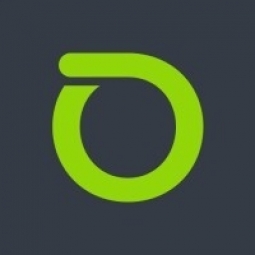Federal Government Agency Takes a Quantum Leap Forward in Network Service Triage with NETSCOUT Solutions

Customer Company Size
Large Corporate
Region
- America
Country
- United States
Product
- NETSCOUT nGeniusONE
- NETSCOUT InfiniStream
- Adaptive Service Intelligence (ASI) technology
Tech Stack
- Microsoft Exchange
- Oracle
- Citrix
- Cisco
- Tandberg
Implementation Scale
- Enterprise-wide Deployment
Impact Metrics
- Cost Savings
- Productivity Improvements
- Customer Satisfaction
- Employee Satisfaction
Technology Category
- Application Infrastructure & Middleware - API Integration & Management
- Networks & Connectivity - Network Management & Analysis Software
Applicable Industries
- National Security & Defense
Applicable Functions
- Business Operation
- Logistics & Transportation
Use Cases
- Process Control & Optimization
- Predictive Maintenance
- Real-Time Location System (RTLS)
Services
- System Integration
- Testing & Certification
About The Customer
The federal government agency is one of the long-standing organizations in North America and can trace its beginnings to the formation in 1775 by the Second Continental Congress. It boasts the largest retail network in the United States – larger than Walmart, Starbucks and McDonalds combined, delivering and processing more than 512.8 million items each day. The agency is a massive enterprise. If the organization were a private sector company, it would be ranked number 43 on the Fortune 500, and on the global Fortune 500 list at an impressive 143. To accomplish its ongoing mission of delivering mail to every address in the U.S. and its territories, it has over 617,000 employees. The agency touts one of the largest – if not the largest – corporate email systems on the planet. It handles more than 3.5 million emails per day that are delivered to approximately 208,000 internal email accounts. Besides using Microsoft Exchange for email, business gets done at the agency by using such services as Oracle and Citrix as well.
The Challenge
The federal government agency is a massive enterprise with a sprawling IT infrastructure. It has over 617,000 employees and handles more than 3.5 million emails per day. Its Unified Communications (UC) capacity hosts 85,000 meetings per month, representing more than 26 million minutes of conference time per year. The agency's computer network links more than 32,000 facilities performing two billion scans a day, and its centralized supercomputing capability processes data from each product piece within 50 to 100 milliseconds. The agency's website had more than 4 billion page views in 2014 alone with more than 3.9 million unique visitors to its home page, and oversaw 3.3 million in online product sales. The communications network supports and maintains more than 168,000 computers, 310,000 hand-held scanners, 81,000 printers, 12,500 smart phones. The unrelenting daily demands made on its sprawling network and systems resulted in inevitable service performance issues with lots of time spent in the war room per incident.
The Solution
The agency decided upon NETSCOUT’s nGeniusONETM Service Assurance platform to enhance visibility into all its network’s service dependencies and interrelationships, as well as improve its overall service performance while improving its key network performance metrics. The NETSCOUT solutions provide a comprehensive source of information as to behavior of applications, servers, network, endpoints and session border controllers (SBCs). Its highly scalable packet flow access allows for the filtering, aggregating and distributing of network traffic while also engaging simultaneous but diverse monitoring activities. Continuous monitoring and real-time analysis of their IT environment and services is made possible by the patented Adaptive Service IntelligenceTM (ASI) technology, which is the foundation of NETSCOUT’s scalable service assurance architecture. The ASI technology runs on the NETSCOUT InfiniStream® Intelligent Data Sources and is made visual by the nGeniusONE platform. This visualized granularity allows for a complete contextual view of all the relevant service interrelationships and dependencies.
Operational Impact
Quantitative Benefit

Case Study missing?
Start adding your own!
Register with your work email and create a new case study profile for your business.
Related Case Studies.

Case Study
Data Capture for Afghanistan Forces
Electronic equipments on the field of Afghanistan provided information on the status of the vehicle and to identify potential threats surrounding it to the British Force. The monitoring and interpretation of this data requires robust and sophisticated digitization for data capture and communication.
Case Study
Enhancing Security and Compliance in Remitly's Global Money Transfer Service with Fastly
Remitly, an online remittance service, was faced with the challenge of securing its proprietary global transfer network. The company needed a security solution that could meet PCI requirements and protect customers' sensitive transactions through its mobile application. The solution had to be capable of defending against new and emerging attack types without impacting performance. Remitly also had to deal with irregular traffic patterns, such as a sudden spike in account transfers from a small network segment on the Pacific coastline of South America. The company needed to determine in real time whether such traffic indicated an attack or valid requests. A traditional web application firewall (WAF) would not be able to distinguish this traffic, potentially leading to customer frustration if the IP was blacklisted.

Case Study
Major Aerospace Company Automates Asset Management
The O&M division of an aerospace and global security company was using spreadsheets to manually track more than 3,000 assets assigned to students and staff. Maintaining audit trails for this high volume of equipment became increasingly time-consuming and challenging. The chore involved knowing precisely what equipment was on hand, what had been issued, its location and the name of the custodial owner of each item. Every aspect of this task was carried owner of each item. Every aspect of this task was carried out by individuals with spreadsheets. Manually documenting the full lifecycle of each asset added to the burden. This included tracking maintenance requirements and records, incidents and damages, repairs, calibrations, depreciation, and end-of-life data.

Case Study
Securing a Large Data Center in the EMEA Region: An IoT Case Study
A leading data-center operator in the EMEA region, with multiple facilities spanning over 25,000 square meters, faced significant security challenges. The operator experienced interruptions in their internal IT network due to unsupervised work of third-party technicians. Despite having a high-end building control system that provided 24x7 monitoring and control to all the building’s infrastructure, the data center was vulnerable from a cyber perspective as it was connected to the IT network infrastructure. The operator launched an urgent OT cyber security project that included both IT-OT network segmentation and OT network asset mapping and anomaly detection. The main objectives were to harden the security of the server systems, secure the facility’s power supply and server cooling system, strengthen the segmentation between building and operational systems, create a visual OT network map, and set up a system for presenting supply-chain attacks that may threaten the data center through equipment vendors’ maintenance activities.

Case Study
Leveraging Graph Technology for Enhanced Cybersecurity: A Case Study on MITRE's CyGraph
MITRE, a federally-funded, not-for-profit company that manages seven national research and development laboratories in the United States, was grappling with the challenge of managing an influx of cybersecurity data. The constant changes in network environments were impacting the security posture of U.S. government agencies. Intrusion alerts, anti-virus warnings, and seemingly benign events like logins, service connections, and file share access were all potentially associated with adversary activity. The cybersecurity researchers at MITRE needed to go beyond rudimentary assessments of security posture and attack response. This required merging isolated data into higher-level knowledge of network-wide attack vulnerabilities and mission readiness. The challenge was not the lack of information, but the ability to assemble disparate pieces of information into an overall analytic picture for situational awareness, optimal courses of action, and maintaining mission readiness. The team also struggled with fully comprehending a given security environment and mapping all known vulnerabilities.

Case Study
Enhancing Security Precision with IoT: A Case Study of Guardsman Group
Guardsman Group, a leading security company in the Caribbean, faced a significant challenge in maintaining the security of its digital infrastructure. The company provides security equipment, personnel, and systems for various businesses across the region. However, one of its offices experienced a security incident that affected all communications at that location. The existing security tools were not sufficient to provide the necessary protection, and it took hours to identify the source of the issue. This incident highlighted the need for a dynamic solution that could proactively identify threats. The company's primary concern was any disruption to its business, as it manages a significant portion of Jamaica's money and cannot afford for its operations to go down.






